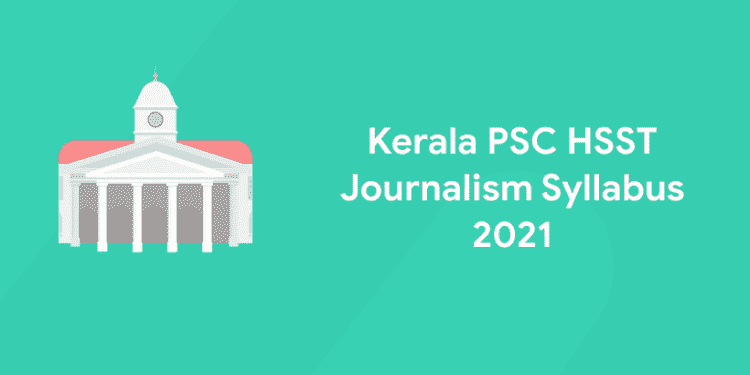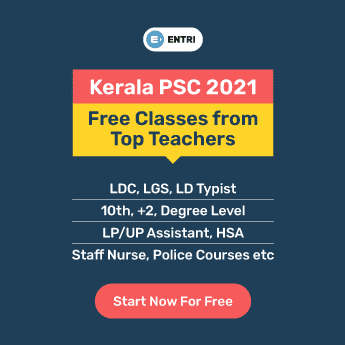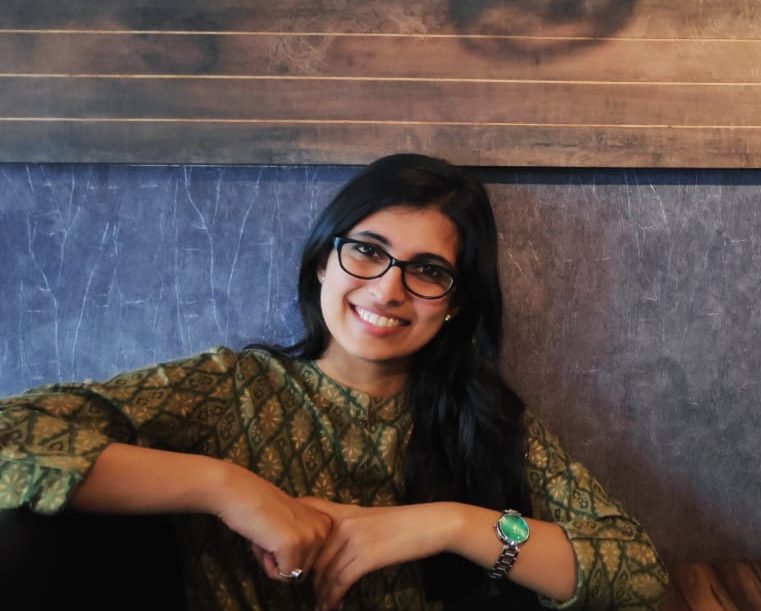Kerala PSC HSST Journalism Syllabus: The Kerala PSC has issued the vacancies available for the post of HSST under the Journalism department. The application sari invited from those candidates who are qualified to appear for the exam. Kerala Public Service Commission is seeking the best candidates for the post of HSST under the Journalism Department. The vacancy details will be soon issued on the official website of Kerala PSC. The candidates who wish to participate in the recruitment process should read the official notification and check the eligibility criteria, age limit, educational qualification, revised syllabus and exam pattern before applying for the post. The candidates should visit the official website for recent updates. Explore to know the Higher Secondary school teacher journalism syllabus.
The application for the post of Kerala PSC HSST is invited via One-time registration and those candidates who have already registered can log in to the profile to register. The Category number for the post of HSST journalism is 024/2018. The competition is deemed as highly tight as the number of candidates appearing for the exam is increasing tremendously each year. The salary offered by this post is Rs.32,300-68700. Along with the salary, different types of allowances and bonuses will be provided.
Kerala PSC HSST Journalism 2021 Syllabus
Check here for the detailed higher secondary school teacher journalism syllabus and PSC journalism syllabus PDF.
| Modules | Subject | Main topics |
| Module 1 | Practices of Writing and Editing for Media | News/ Views – Concepts and Definitions Styles of News Reporting- Functions and Responsibilities of Reporter- Types / Categories of News Chequebook/ Trends in Journalism– Features- Syndicates- News Agencies
Reporting for Television and Radio- Principles of Editing- Editorial writing- Basics of Translation Techniques- – Photo Journalism- Rules of Cropping- Aspects of Photo editing-Page Make up- News room management Ownership patterns – Editing Views- Periodicity of Magazines- Value of Timeliness- Archival backups and value additions-Eminent Magazine Editors in India- Columnists and Cartoons- Magazines-E zines- Popular and Alternative streams of Magazine Journalism. Basics of Technical Writing- Classification of Documentation- Life Cycle in Mini Projects Large Projects-Requirement Analysis-Designing Phase-Developing the content Publishing-Maintenance- Supporting Technologies and Applications- Principles and Guidelines for Information Design- Information Design Theories- Information Architecture-Information-Management-Process of Documentation- Project Understanding- Stakeholders and Audience Analysis. Module 2 Fundamentals of Communication Theories an |
| Module 2 | Fundamentals of communication theories and application | Etymology and Concept of Communication – Difference between Model and Theory in Communication
Important Models and Theories in Communication Aristotle- Laswell Comb’s ABX Model and Gerbner’s Model, Diffusion of Innovation Model, One step, Two step, Multi step flow of Communication, Molina’s model of International Flow of Information., Magic Bullet Theory, Cultivation Approach, Cognitive Dissonance-Selective Exposure, Perception and Retention, Balance Theory, Congruity Theory, Social Learning Theory, Agenda Setting Theory, Framing, Priming, Stereotyping, Ideas of Persuasion. Schools of thoughts in Communication- Inter Cultural Communication -Media and Technology- Mass- Effects of Mass Media- Normative Theories- Media Practices and Role of Communication- Idea of Convergence in Media |
| Module 3 | Radio | Evolution of Broadcasting- History of radio- Characteristics of sound-pitch Frequency Modulation; Acoustics; recording and Nonlinear editing; Audio console and transmission of sounds- Broadcast language- Sound effects and Actualities; Script writing for radio talks, douc-features, magazine programmes, drama and special audience programmes Focus on Indian Rural- Community Radio- Internet radio; World Space Radio- Emergence of Private FM’s- RJ- Radio as Entertainment medium-Shifts in Language of Radio |
| Module 4 | Television | Functions and Characteristics of TV medium- balance and objectivity; Door darshan- Prasarbharathi- breaking News
Live/Recorded/Archival News – Talk shows- News discussions- Prime time Television ratings- TAM- Bias and Presentation mode- Editing news-editing rules; Instantaneous non-linear edit- Interview techniques-ambush interview; – Exercise for News Production- Augmented Reality, Virtual Reality Cloud- Major Television shows- Sting operations and Investigative Journalism in TV. |
| Module 5 | Film studies | History of cinema-beginnings- Social backdrop of the evolution of Cinema- World Wars- Industrialisation- Cold war- German Expressionism- Neo realism-French New Wave-Soviet Film Masters of World Cinema– Asian film Indian Cinema – Documentary film-beginnings, Film terminology and Aesthetics – Basics of film-making process- Shot/Angle/Lighting- Production Techniques Montage/Mise end scene/Rule of Thirds- Film Society movements in Kerala- Major International Film Festivals and Awards- IFFI- IFFK- |
| Module 6 | Advertising | Concept of Advertising- Role of Marketing- History and Growth of Advertising Functions of advertising – Types of advertising- Structure of an advertisement/ Rosser Reaves theories-AIDA formula – Consumer Learning Theory- Hierarchy of Effective Models Communication Advertising Agencies; ASCI –Target Audience- Different Marketing groups- Differences in Medium and patterns of Advertising- Indian Context- Digital Advertising. |
| Module 7 | Public relation | Idea of Public- Internal/External- Levels of Communication- Marketing Communication- Public relations campaigns; Professional organisations and code of ethics- Corporate communication and management – Crisis communication; Public relations and management- Public Relations Agencies Propaganda Management- Effectiveness as a Rhetoric- News releases Promotional Videos- Event Management- Role of PR in Development Communication campaigns- P R in Health communication. |
| Module 8 | Media, culture and society | Philosophical foundations of communication studies- Socio psychological, Cybernetic, Rhetorical, Semiotic, Socio cultural, Critical and – Communication and Mediation- Idea of Public Sphere- Communication & Social imaginaries- Idea of Culture- Representational logics of Communication
Language and representation- Representation and symbolic power- Agenda setting- Ideology of Media –Hegemony -Discourse and Power- Subaltern and Gender Perspectives-Propaganda-Everydayness and communication practices – Virtual reality- Digital democracy-Social Media campaigns and Movements, Privacy and surveillance, Gaming culture. |
| Module 9 | Media law and ethics | Legal System in India- Types of Laws- History of Indian Media Laws- Constitution of India as Framework- Preamble- Fundamental Rights- Duties, directive principles of state policy- Privileges of Legislatives and Judiciary- Introduction to Indian Penal Code with reference to sedition, crime against women and children- Publication of Objectionable Materials: Defamation, Press and Registration of Books Act, 1867, Official Secrets Act, 1923, Right to Information, Right to Privacy, Indecent Representation & laws dealing with obscenity -Indecent Representation of Women (Prohibition) Act, 1986-Prasar Bharati 1990; Cable TV Regulation Act -Press Commissions in India; Press Council of India, Wage Boards; Cyber laws in India-Information Technology Act, 2000. Entertainment and Creative Industry-Cinematograph Act 1952, Copyright Act, 1957- Intellectual Property Right Legislations- Paid News- Sting Operations- Fake news- Piracy- Press Ombudsmen-History of Ban on Digital Media networks. |
| Module 10 | Media History (Special thrust to Malayalam Journalism)
|
Brief overview of Media in Pre-colonial period – Media in Colonial Period-
Media in Post-Independent Period- Regional Media History with emphasis on Malayalam media- Prominent Figures in Journalism in 19th&2oth Century in Kerala- Renaissance, Leaders and Press, Beginning of printing and publishing in Malayalam, Doyens of Malayalam journalism- National Emergency and Malayalam press, Growth of Little magazines, Convergence and hyper localization- Origin and growth of AIR and DD in Malayalam, Private TV channels, Cable TV, FM Radios, Digital Journalism in Malayalam- Eminent Columnists and Cartoonists of Kerala.
|
Check here for the latest Kerala PSC Study Materials!
HSST Jounalism Syllabus – Download PDF
Kerala PSC HSST Journalism Syllabus: The candidates can secure the PDF of the HSST Syllabus for their further preparation. Click here to download the Kerala HSST Journalism Syllabus
The candidates can have a secure job and lifetime benefits. The recruitment will be based on direct recruitment. The minimum age limit of the candidates should be 20 years and the maximum age limit should be 40 years. Those candidates who wish to apply for the post should prepare well for the exam. This article will help you to understand the revised exam syllabus. Understanding the syllabus is the most inevitable thing to crack any competitive exam. The study plan and strategies for the preparation can be created only after the consideration of the syllabus. The syllabus will help you to locate the focus points. The weaker section and the stronger section can be differentiated accordingly. Don’t forget to allot more time for those weak sections in the syllabus.













